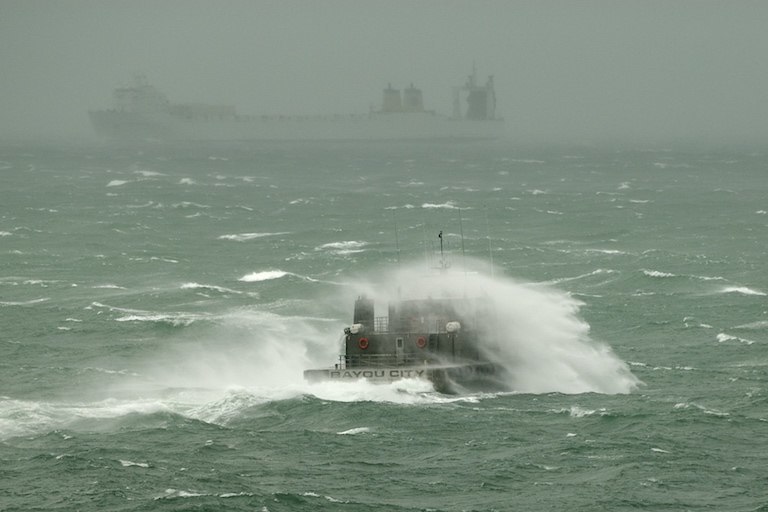As a cruise ship nears port, a small boat pulls up alongside. Often mistaken for a tug boat, the pilot boat (and pilot) perform essential functions in guiding enormous cruise ships into port.
Cruise ships visit extremely popular destinations and share port waterways with a flotilla of small and large vessels. The job of a pilot is to board the cruise ship and assist the captain with navigation around the local harbour. Regardless of ocean conditions, the pilot will transfer from the small pilot vessel and ascend a ladder on the side of the cruise ship while the ship is still moving. This dangerous feat is not for the faint-hearted, and pilots are highly trained and fearless mariners.
Pilot transfer from the Pilot boat Endeavour to the cruise ship Oosterdam in the Queen Charlotte Sound, New Zealand.
Port pilots have up-to-date local knowledge
The pilot will offer the ship’s captain advice regarding a range of issues that are unique to the port:
- tides
- location of sand bars
- changes to port facilities and docking procedures
- changes in the ship channel
Cruise ships are owned and staffed by citizens of many countries, and once onboard the cruise ship, pilots can communicate with local port authorities in their native language. Cooperation between pilot and ship’s officers is important – the pilot has local knowledge and ship’s officers have knowledge of their vessel. Depending on conditions, laws, or customs, the pilot or captain will be the one giving orders when arriving or departing from port.

A cooperative scenario
A typical scenario might include the captain giving initial data to the pilot, who will then navigate through the breakwaters or start the turn at the appropriate location. At this point the captain may again take the helm and guide the ship alongside the terminal. Docking is then performed by ship’s officers, except in difficult locations where ‘docking pilots’ are on hand to assist.
Although the pilot may at times be the person giving orders, they never officially take command of the vessel (except in the Panama Canal). The pilot is an expert advisor, and usually an ex-captain with many years of experience, but the cruise ship captain retains ultimate responsibility for his ship and passengers.

The bold and the beautiful
Port pilots have been used for hundreds of years, and some have even lost their lives due to dangerous ocean and weather conditions. Pilots have intimate knowledge of local sights and conditions, and in some safe situations, such as cruising the fjords of New Zealand in fine weather, are requested to give commentary about coastal highlights for the entertainment of cruise ship passengers.
Images by: Tom Bradnock, Louis Vest (2)




